| Your browser is not supported. | ||
|
Please browse our site using any of the following options:
| ||
How to choose the best camping gazebo
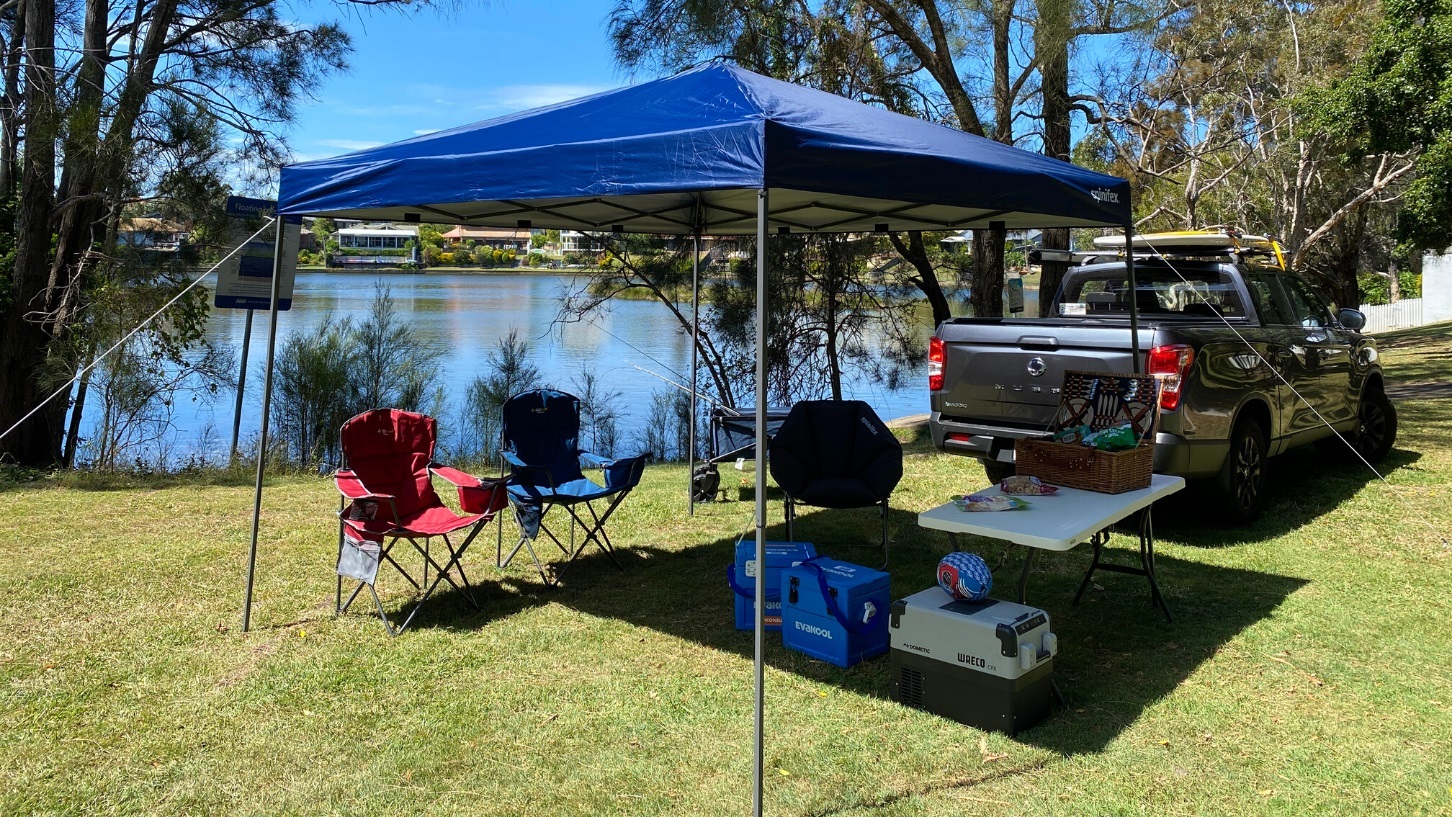
In Australia, we have some of the best camping conditions anywhere in the world — amazing locations and great weather for much of the year. But no matter how good the conditions are, if you're camping for more than a night or two, you're going to want a shelter that extends beyond a place to sleep.
That's where a camping gazebo or gazebo tent (as some people call them) comes in. A lightweight, packable shelter that is easy to set up and provides ample headroom along with enough space for cooking, relaxing and everyday living. Camping gazebos come in a wide range of shapes and sizes so working out which one is best for you can feel like a bit of a minefield at times. Let's take a look at what to consider when choosing the best gazebo for camping.
Size
The first thing you'll want to consider is what size gazebo is right for you. The most common gazebo size is 3 x 3 metres, and this size makes for a great all-rounder. It's big enough for a modest camp kitchen, table and a couple of camping chairs while still being small enough to easily store and transport.
From here you can go down in size to 2.4 x 2.4 metres, or up in size to 4.5 x 3 metres, 6 x 3 metres and more. What it usually comes down to, is a trade-off between size, weight and portability when packed and the space it provides when set up.
When deciding on which size is best for you, it's helpful to weigh up how many people will want to sit under it and how much gear you want to be sheltered too. But it's also worth thinking about the kinds of places you'll be camping in. There's no point in having a huge 6 x 3 metre gazebo to go next to your 12-man tent if you'll be camping on a small site in a crowded campground.
Weather resistance
The primary purpose of a gazebo is to protect you from the elements, so it's super important that it does this well. You'll obviously want the gazebo to be waterproof but don't forget to also pay attention to the UV rating to ensure it'll also protect you from the sun when you need it to.
To make sure you can be confident that your gazebo will keep the rain off in bad weather, look for a waterproof rating (the higher the rating the better). In heavy rain, water can also pool on a gazebo roof, creating leaks and drips. Some gazebos now feature ani-pooling designs, so this is also worth bearing in mind when choosing your gazebo.
Weight and Portability
As we mentioned above, weight and portability usually come down to a trade-off with size, but quality has a part to play also. Better quality gazebos will often be constructed with thicker poles and heavier canvas, making them weigh more and take up more space when packed.
When you're deciding on what's the best fit for you, think about who will be transporting and setting up the gazebo and how far you expect to have to carry it. It's also worth paying attention to the quality of the bag too — some bags include wheels for easy transport, while a flimsy bag will only make things harder when it comes to carrying the gazebo and packing it away.
Ease of Set Up
Any piece of camping gear needs to be easy to set up and pack down — the last thing you want is to spend the entire first and last day of your holidays on campsite duty. Because gazebos are a big and often heavy piece of camping kit, this consideration comes into play even more.
Nearly all camping gazebos nowadays are pop up and can be set up in minutes. However, the bigger the gazebo is the harder it will be to put up. This is just down to the fact that bigger gazebos are heavier and cover a wider area than smaller ones.
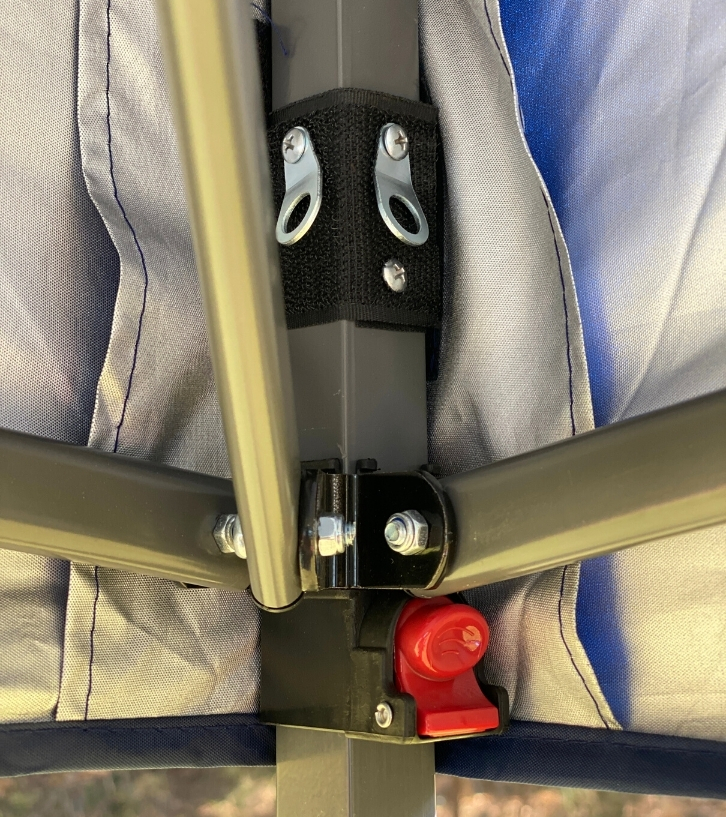
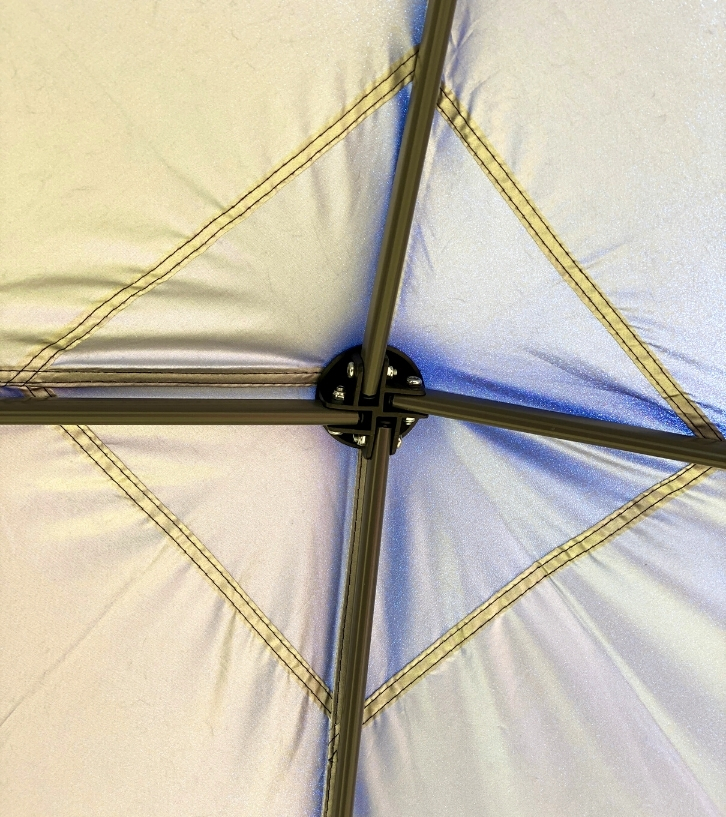
Height Adjustable
Most gazebos are height adjustable, and this is an important feature for getting the right setup for every campsite. When you're deciding on a gazebo, pay attention to the range of height adjustment, but also the mechanism. Having a gazebo that is easy to adjust will pay dividends if you want to lower it in high winds or heavy rain.
Durability
Like most camping gear, gazebos vary a lot in terms of durability. And, when you consider it usually makes up the most important shelter outside your tent or swag, you're going to want a gazebo that can withstand tough Aussie elements when it matters most.
When you're looking at the durability of your gazebo, the two main factors are the frame and the canopy.
Frame
A thicker frame will generally be stronger than a thinner one, but the quality of materials used in its construction comes into play as well. The quality of the material (and how it's coated) will also impact how easily the frame rusts, which can happen surprisingly fast in salty coastal air.
A good guide is just to go with a reputable brand, this way you can be reasonably sure the frame is going to stand up to wind and weather when it needs to.
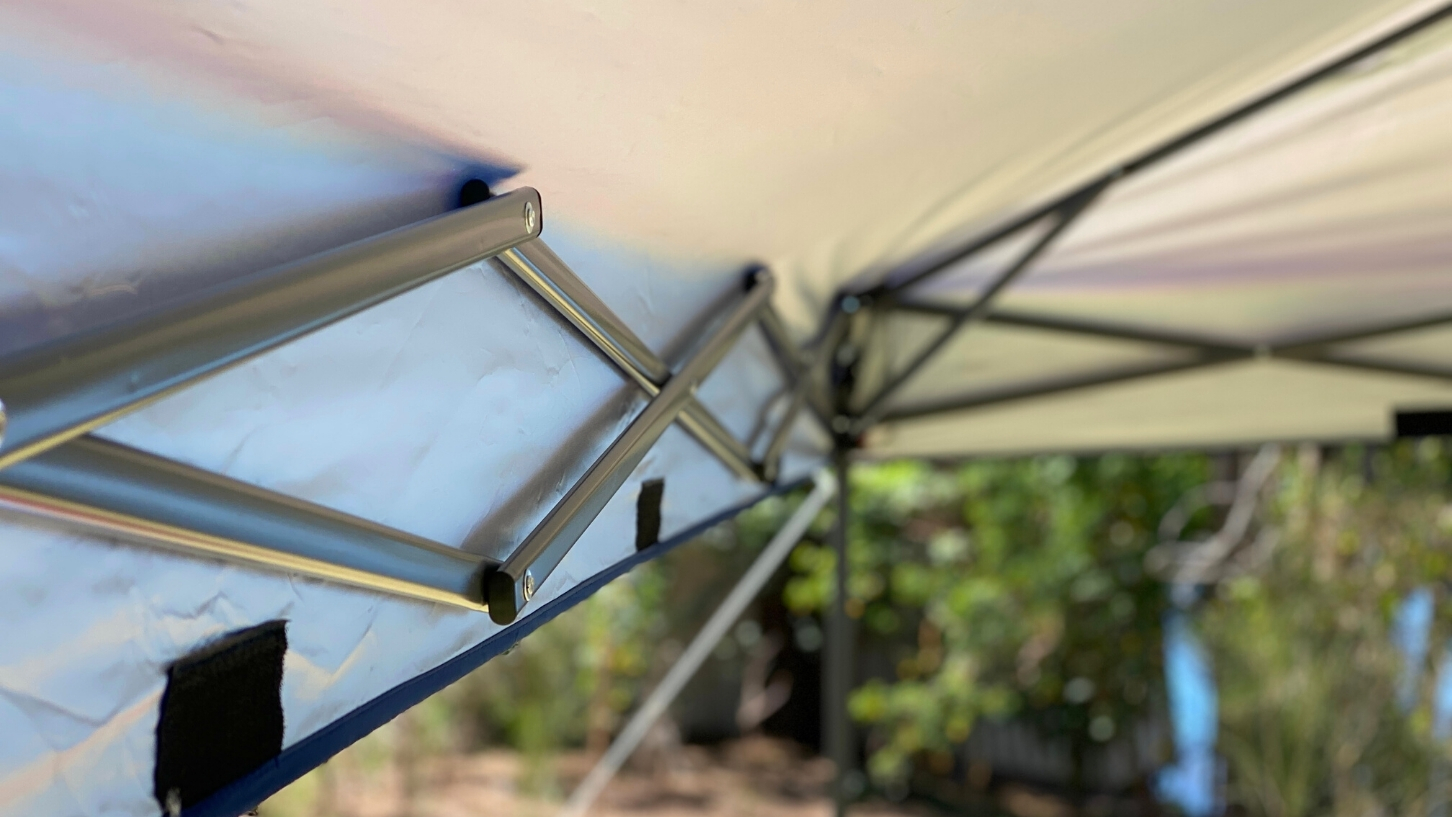
Canopy
A durable canopy will usually be made of thicker fabric. The thickness of fabric is given in denier (D) and canopies usually range from 150D to 420D. Higher denier fabrics also provide better protection against wind, rain and sun. Stitching will also impact the durability of a fabric, so look out for quality stitching and double stitching and patches on areas where the frame connects with the canopy.

Removable Walls
Most gazebos will also be compatible with optional walls. These are usually either solid, waterproof fabric or mesh. Walls offer great protection against the elements and are also handy if you're wanting some added privacy.
Walls also make it easy to adapt to changing conditions and can be rolled up or down depending on the time of day and the weather. If you think you'd like walls on your gazebo, just remember to double-check that the model you purchase is compatible with these add-ons.
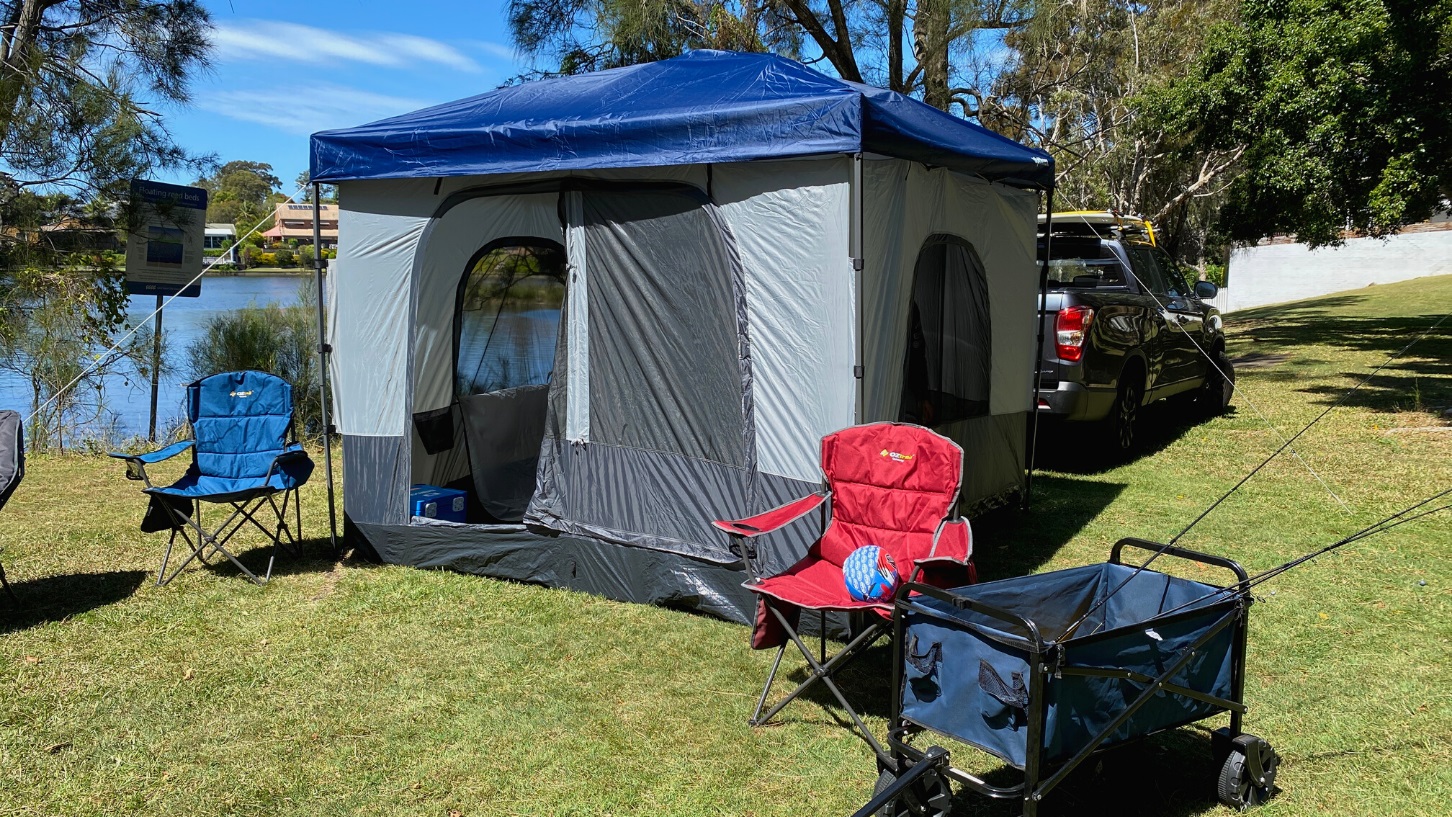
Gazebo Ideas
Aside from creating a sheltered living area for your campsite, having a gazebo also enables you to be a little more spontaneous when it comes to enjoying the outdoors. For example, many campers use a gazebo as an extra cover for a simple swag setup. This enables you to create a pretty decent, all-weather campsite in a matter of minutes.
Gazebos are also great for BBQs, picnics and days at the beach. Having a portable shelter means you can worry less about what the weather's doing and focus on having a good time.
Final thoughts
We all love camping, and a gazebo is an easy and affordable way to take your camping set up to the next level. From cooking meals out of the wind and weather to having your own shaded area for relaxing and watching the world go by, a gazebo really does take your camping experience up a notch. Just remember, a good gazebo should last you for many years so it's worth taking the time to make sure you get the right one for you the first time around. After that, all that's left to do is just get out there and enjoy it. Happy camping!
Find your local Anaconda store and check out our extensive range of camping gear for your next outdoor adventure.